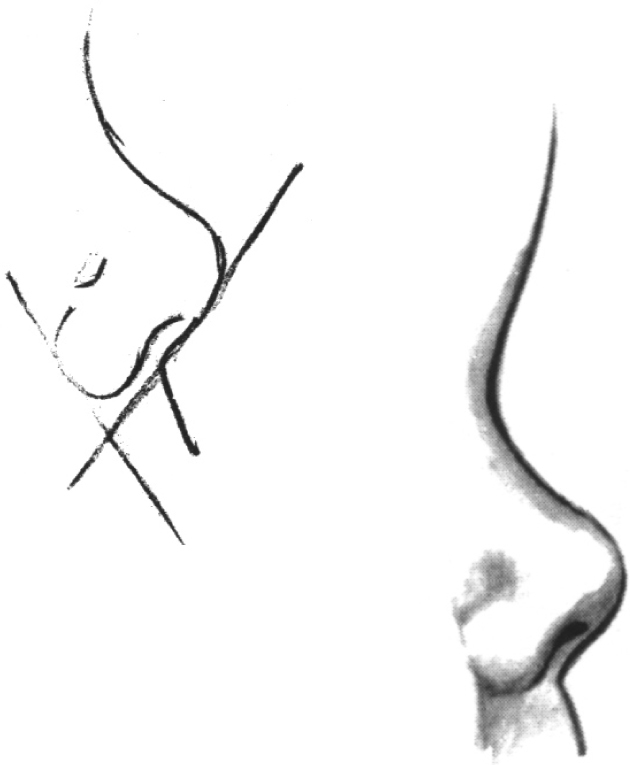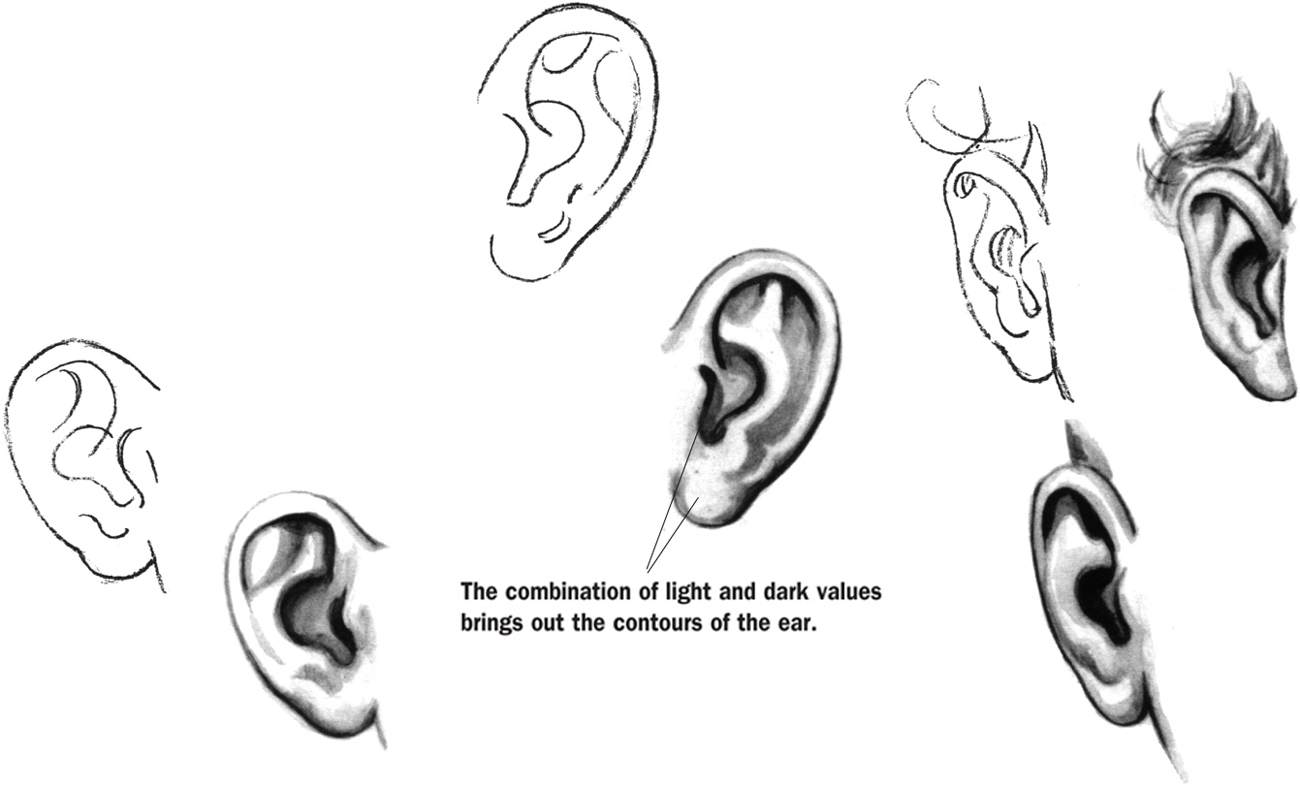Children’s Features—Ears & Noses
It’s important to study the differences between the features of children and those of adults. In general, children’s faces and features are smoother, rounder, and, of course, smaller. Therefore, the shading should be rather minimal and light.
To begin, study your subject’s features; then block in the basic shapes. Develop the form with shading, but keep it soft, smooth, and delicate, as shown on these examples. Generally, the values are fairly even, only becoming darker in the nostrils and the crevices of the ear.

Two intersecting guidelines help establish the angle of the nose.

The liveliness and innocence of children make them exciting drawing subjects.

As the illustrations show, you should first lightly block in the basic shape of the ear or nose. You may want to indicate a few of the areas that will have darker shading.
